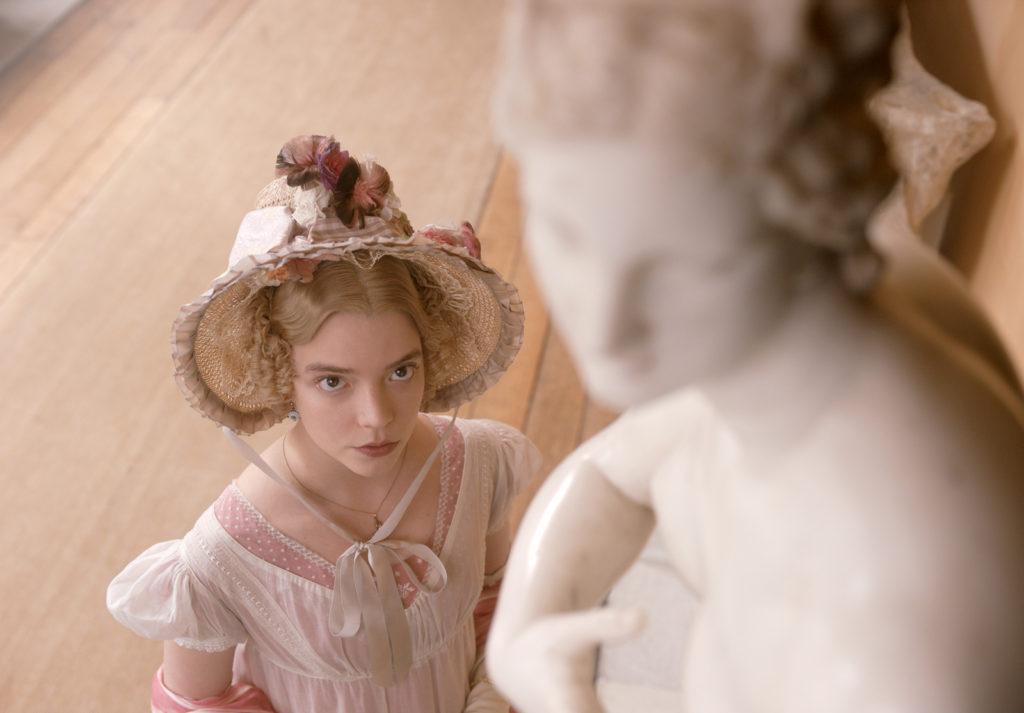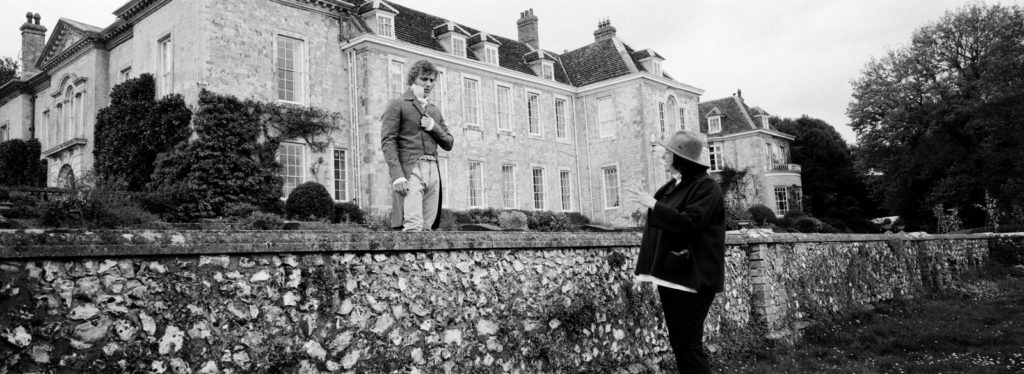Autumn de Wilde, a veteran photographer and music video director, is making her feature debut with an adaptation of Jane Austen’s “Emma.” On the heels of Greta Gerwig’s recent retelling of the classic “Little Women,” this film will undoubtedly inspire and connect with a whole new generation of Austen aficionados and newcomers.
Using the broad strokes and colors of the Regency era, de Wilde skillfully uses her passion for photography and eye for detail to comment on social etiquette in “Emma.” Eleanor Catton (“The Luminaries”) penned the script.
De Wilde’s résumé includes shorts for Prada, photographs for Rodarte, and music videos for Jenny Lewis, Rilo Kiley, Florence + the Machine, and Beck. Over the last two decades, she has captured the images of the likes of Fiona Apple, Busy Phillips, Tegan and Sara, and many more. That close artist-subject relationship translates into her work on “Emma.,” whose stars include Anya-Taylor Joy, Miranda Hart, Mia Goth, and Bill Nighy.
Women and Hollywood spoke with de Wilde about shifting from photography and music videos to filmmaking, her interpretation of Austen’s novel, and the joys of telling an anti-heroine’s story.
“Emma.” is now playing in theaters nationwide.
This interview has been edited.
W&H: How did you move into filmmaking as a career from working as a photographer and music video director?
ADW: Looking back, I tried to treat every new video, every commercial kind of like the film school I didn’t get to go to. I remember distinctly thinking to myself that I didn’t have the advantage of having a concentrated amount of time to learn about filmmaking. So, anytime I got a chance to be in motion, I addressed a new thing that I wanted to learn, of course, in the context of the idea and job.
I developed a style from my photos and had more fun pretending they were scenes from movies, like a portrait. It was a game I played. I always hoped that my work instilled a sense of play in my subjects. Throughout time, I learned a lot about directing people, even in photography. I also went to drama school and studied to be an actor. I’ve always had an affection for actors and a sense of compassion for what they do and how they do it.
Directing a film was always something I saw in my future. I had a movie that almost got made, but the finances fell through. When [studio executives] asked me to pitch on “Emma.,” it didn’t feel out of the blue. I just really hoped I would get the opportunity.
W&H: What has it been like to work on your film debut?
ADW: When I was younger, I wanted people to trust me with my ideas as soon as I had them. Over the years, I have had to prove myself over and over in photography. As an artist in general, there’s always a wall you feel like you have to climb over. When you’re a woman, you wonder, is it because I’m a woman I didn’t get that job? That kind of paranoia isn’t super healthy.
I’m 49, turning 50 this year. Here I am making this movie and have at my disposal 20-plus years of all these experiences. When I was younger, I wondered why I did all these different things – I draw, dance, act, take photos. I felt scattered. It is so refreshing to have every single one of those things be a lifesaver while making this movie.

“Emma.”: Focus Features
W&H: Who championed your work on “Emma.”?
ADW: Working Title and Blueprint Pictures did this film together. First, I met with Tim Bevan, the head of Working Title. I had this incredible conversation with him. When I left, I knew I wanted this movie more than anything. I’m so glad I had the chance to work with this talented, remarkable, incredible producer who has made such legendary films [such as “Four Weddings and a Funeral”]. Everyone who works at the studio is incredible, but he’s interesting because he’s so knowledgeable. I thought someone like him, with this experience, would be jaded. He is so smart and not afraid to shut anything down. That is what makes it so exciting to have his approval. Tim Bevan immediately knows what he thinks.
Over the years, I have tried not to separate myself as a woman who does this. I’m part of a larger fight to get more recognition and more opportunities. However, film executives generally think of working professionals as artists or directors, not as women. I felt like that with Tim Bevan, and that matters with a producer. You want to think that that person supports the thing you are making, [and not just] because of who you are.
I would say the same about Graham Broadbent from Blueprint Pictures. When we were in press, I remember thinking that these two companies didn’t need to make a movie together. I got to pick their brains while making this movie instead of sitting at a table with producers who were making my eyes roll.
W&H: How important is it to work with women?
ADW: I hire talent. But I know that for many years, I wasn’t invited to these kinds of meetings. I’ve met so many women and men who were qualified to do this film, and the heads of departments I chose were because I felt the chemistry between everyone was going to be right. A lot of them were women, but I wasn’t doing anyone any favors. Diversity needs to come from being able to see a lot of people’s work. A movie will fail if you doubt any hiring decisions, and that person won’t succeed.
I worked with Deborah Saban as my first assistant director. She’s a legend. A lot of people would think a woman couldn’t handle that role, but she was an incredible force. In the first meeting with her, I knew I needed her to protect me and guide this ship, but I didn’t necessarily think I needed a woman by my side. I felt proud on set. I’m 6’2”, and she’s not very tall. We were working with women and men, old and young, people who have made a ton of movies, as well as production assistants, and they all looked up to her and loved her. She’s a powerhouse and was very inspiring to have on set.
We had a lot of women on set. [We had] production design by Kave Quinn; costume design by Alexandra Byrne; and our set design by Stella Fox.
Christopher Blauvelt, our cinematographer, and I have worked together for years. I have a loyalty to that relationship, which was an essential part of doing this movie.
W&H: The character of Emma seems very current, and quite feminist, the way she stands on her own feet and speaks her mind. How did you make the film so contemporary yet stay so faithful to the book?
ADW: We did break a lot of rules. I wasn’t worried about making big, sweeping statements, and that might be why it seems that we were so faithful. Jane Austen was a genius, and she wrote a timeless story. I also think that “Clueless” was an incredible version of “Emma” in its translation. So, I didn’t feel a sense of urgency to modernize it because I am personally interested in the history of etiquette, classism, fashion history, and the comedy of all those things.
I think that for Jane Austen’s time, even writing a character like Emma was very feminist. She was a smart genius with independent thoughts that were burdened by the rules of the time. They didn’t seem to inhibit her. She was so insightful to human nature. I have a lot of personal memories of friends I had that had some of Emma’s personal qualities. What’s great about the book is that the reader has to reckon with themselves. That’s why an anti-hero is so satisfying, because we’re able to explore the darker side of ourselves. By letting Emma be unlikeable at times, we can watch her with amusement and want to strangle her at the same time. That was my intention – to humanize Emma and hopefully stir up people’s memories of their mistakes.







